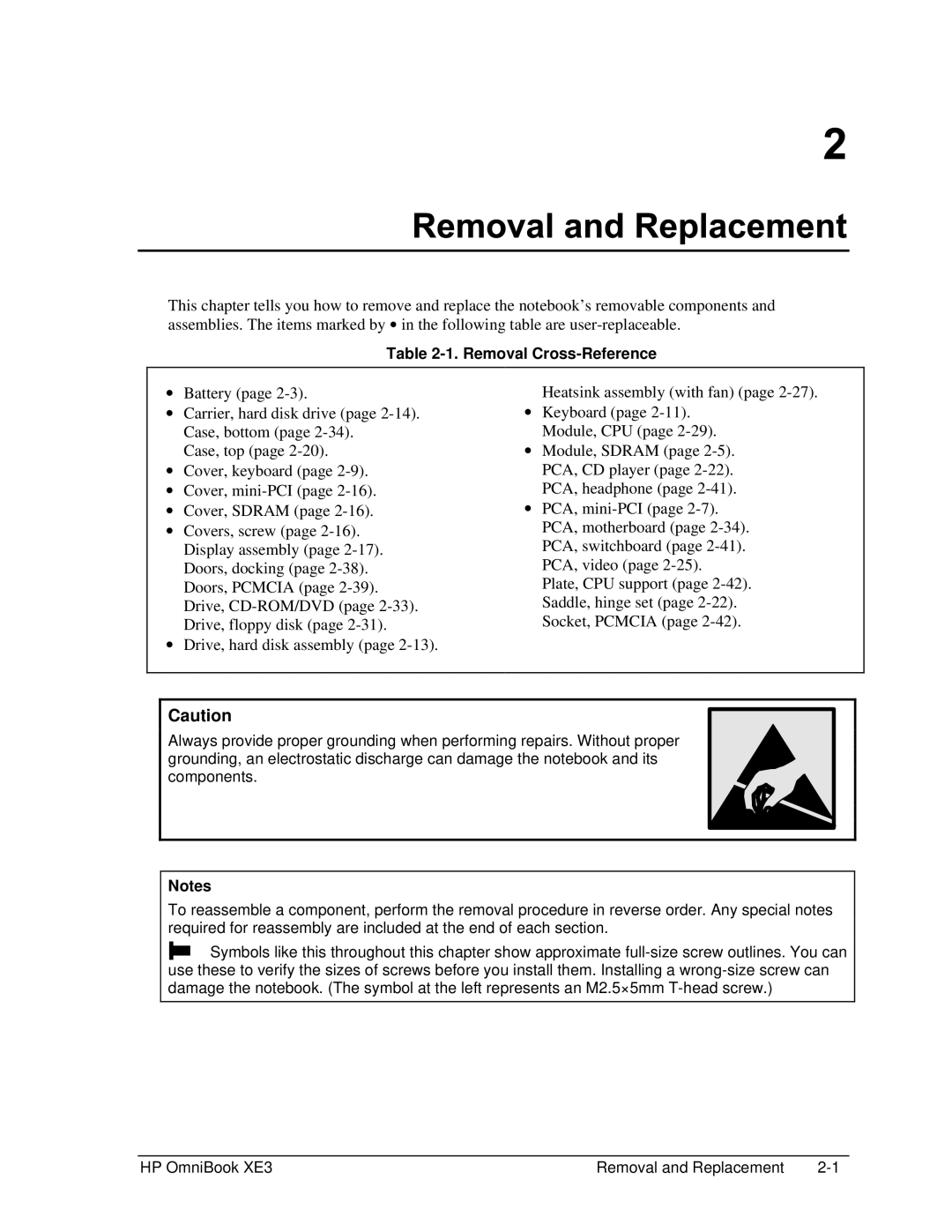
This chapter tells you how to remove and replace the notebook’s removable components and assemblies. The items marked by ∙ in the following table are
Table 2-1. Removal Cross-Reference
∙Battery (page
∙Carrier, hard disk drive (page
Case, top (page
∙Cover, keyboard (page
∙Cover,
∙Cover, SDRAM (page
∙Covers, screw (page
∙Drive, hard disk assembly (page
Heatsink assembly (with fan) (page
∙Keyboard (page
∙Module, SDRAM (page
∙PCA,
Plate, CPU support (page
Caution
Always provide proper grounding when performing repairs. Without proper grounding, an electrostatic discharge can damage the notebook and its components.
Notes
To reassemble a component, perform the removal procedure in reverse order. Any special notes required for reassembly are included at the end of each section.
![]()
![]()
![]()
![]() Symbols like this throughout this chapter show approximate
Symbols like this throughout this chapter show approximate
HP OmniBook XE3 | Removal and Replacement |
